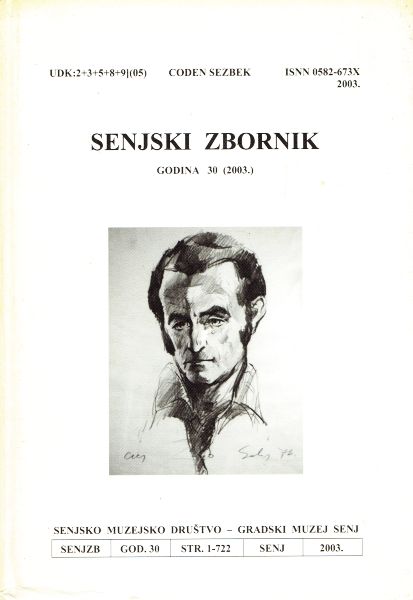Senjsko područje i Hrvatski radiša od 1903. do 1945. godine
Senj Region and Hrvatski Radiša 1903-1945
Author(s): Mira KolarSubject(s): Civil Society, Local History / Microhistory, Political history, Social development
Published by: Senjsko muzejsko društvo i Gradski muzej Senj
Keywords: Hrvatski radiša; Senj;
Summary/Abstract: Hrvatski Radiša (Croatia’s Industrious) was established in 1903 by the Croatian public in reaction to the government’s neglect of youth of the country. It was established in Senj where due to the strong influence of the Catholic Church it took a specific form. At the same time the Church cared for Croatian youths through different organisations of the Croatian Catholic Movement. This was most obvious in Senj after 1932 when the Senj bishop was Luka Starčević, which was in contradiction with the fact that the leader of the Hrvatski Radiša between 1931 and 1945 was Milan Prpić who was an industrialist and wholesaler. In this article the author wants to turn the attention to the fact that the Hrvatski Radiša from 1924, when Prpić became its vice-president until 1945 was under his powerful influence. It is also shown how the Hrvatski Radiša was saved in 1921 by a donation of $25,000 from The Croatian National Association from Pittsburgh and supported by don Niko Grašković from Vrbnik who was studying in Senj during the period of inflation of the Austrian currency – crown (kruna). The number of the Radiša students from Senj region was not very big, but the Hrvatski Radiša was still a very important Croatian institution because of its student’s homes in Zagreb. It was also the greatest presentation of the Croatian concord during the hard period of Yugoslavian monarchy between the two world wars.
Journal: Senjski zbornik - prilozi za geografiju, etnologiju, gospodarstvo, povijest i kulturu
- Issue Year: 30/2003
- Issue No: 1
- Page Range: 321-350
- Page Count: 30
- Language: Croatian

